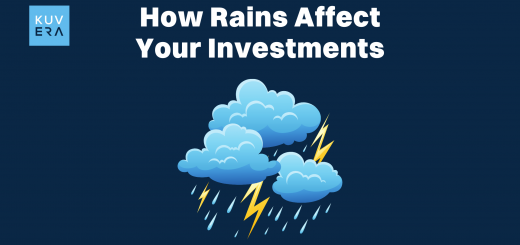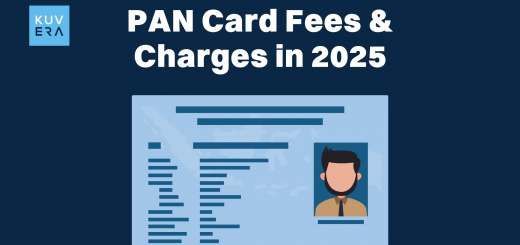One of the most fundamental principles of sound investing that experts speak about quite often is “Never keep all your eggs in one basket.” Following this basic tenet of investing will set you on the path to understanding asset allocation and diversification.
In simple terms, asset allocation is the act of dividing one’s savings among the various types of assets. The three main asset classes are stocks, bonds, and cash and cash-like assets. Other lucrative assets you can add to your portfolio to diversify income include precious metals, real estate, collectibles, cryptocurrency, etc.
Why is asset allocation important?
Proper asset allocation maximizes your returns in relation to your risk tolerance. Different asset classes behave differently. For example, when equities are rising, gold investments may fall, and vice versa.
As a result, it makes sense to diversify investments across asset classes. This is done so that the other well-performing asset classes balance the underperformance of one asset class.
Putting all your money into one asset class or mutual fund scheme may not be prudent. The returns tend to be higher if your investment is spread across asset classes.
Asset allocation also works as a strategy that allows for macroeconomic movements that extend beyond an investor’s control. Proper allocation gives the investor a hedge against currency fluctuations and significant geopolitical shifts.
Types of asset allocation
Here are the types of asset allocation you need to know:
-
Life Cycle Fund Asset Allocation
Under this strategy, the asset allocation is done on the basis of an investor’s return on investment (ROI) based on factors such as the investor’s age, investment goals, and risk profile. However, since these factors vary from person to person, no standardization is involved in identifying the ideal asset allocation.
-
Tactical Asset Allocation
This plan addresses potential long-term problems resulting from a strategic asset allocation plan. The strategy was developed in order to maximize results on short-term investment strategies. The investment portfolio gains a market-timing element that enables investors to invest when economic conditions are more favorable for a particular asset class.
-
Insured Asset Allocation
This strategy is ideal for investors who have a low-risk tolerance. It entails establishing a baseline value below which the portfolio shouldn’t deviate. Investors must take the necessary precautions to avoid the risk if it declines by investing in risk-free assets like treasury bills, etc. For instance, senior citizens who need to maintain a basic standard of living may find this strategy better suited to their investment objectives.
One of the most well-liked investment approaches, this allows an investor to continuously modify the asset mix in response to market highs and lows as well as economic gains and losses. With this approach, you invest in assets that exhibit indicators of sustained market gains and vice versa. For instance, young working professionals with a higher risk-taking appetite may find this strategy better suited to their investment objectives.
What is rebalancing?
Rebalancing is the process by which investors return their portfolio to its initial mix of asset allocation. Rebalancing is required because not all grow at an equal pace over a period of time. This may cause your holdings to diverge from your investment objectives. By rebalancing, you mitigate the possibility of being overweight in any asset category in your portfolio and also ensure that it is at a comfortable level of risk.
When done correctly, asset allocation protects your money while also maximizing its growth potential, regardless of which asset class is outperforming in the markets. Kuvera is here to help you on your asset allocation journey. We at Kuvera make unbiased choices to bring out the best results. Why delay your next big gain? Try Kuvera now!
FAQs
Q1. Give an example of asset allocation.
Investor profile: 25 years old, 40 years to retirement, high-risk tolerance
This investor hopes to increase their retirement savings over the next 40 years. The investor wants a well-diversified portfolio with high returns. Since the investor is young, he also has a high risk appetite. An ideal retirement investment portfolio should have the following asset allocation:
- 80% stocks
- 40% large-cap stocks
- 30% mid-cap stocks
- 30% small-cap stocks
- 15% bonds
- 5% cash
Q2. How often should I rebalance my portfolio?
Some fund managers recommend regularly rebalancing, at least every six or twelve months. Others suggest rebalancing when your investments in a specific asset class increase or decrease by a certain amount. In either case, rebalancing works best when performed regularly.
Q3. How much should I allocate to each asset?
The allocation division will depend on the following aspects:
- Age – Are you a young person with a high-risk appetite or an older person who prefers to park money in safe investments?
- Time Horizon – For how long do you intend to stay invested?
- Risk tolerance – Can you bear seeing your investments fall in value at times, knowing that you’ll most likely earn a higher return in the long run?
Interested in how we think about the markets?
Read more: Zen And The Art Of Investing
Watch/hear on YouTube:
Start investing through a platform that brings goal planning and investing to your fingertips. Visit Kuvera.in to discover Direct Plans and Fixed Deposits and start investing today.
#MutualFundSahiHai #KuveraSabseSahiHai!











